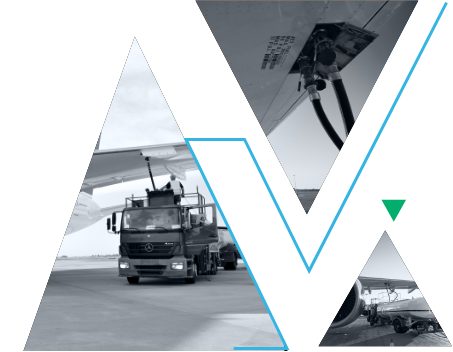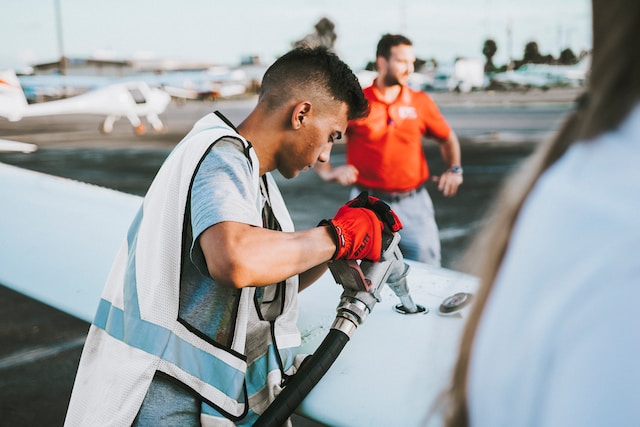Aviation Aircraft Fuel Supply at Philadelphia International Airport
By optimizing fuel delivery and managing reserves at Philadelphia International Airport (PHL), Just Aviation promotes sustainability, cutting fuel waste and securing efficient, reliable operations at PHL.
By optimizing fuel delivery and managing reserves at Philadelphia International Airport (PHL), Just Aviation promotes sustainability, cutting fuel waste and securing efficient, reliable operations at PHL.

Exceptional Services at Philadelphia International Airport
Just Aviations commitment to sustainability strengthens fuel management at Philadelphia International Airport (PHL), providing dependable solutions that positively influence global aviation. Our tailored services boost the reputation of PHL, supporting Philadelphia, Pennsylvanias leadership in responsible aviation.
Refuel Smarter and Faster with Specialized Teams at PHL
To meet global aviation needs, Jet A-1 fuel adheres to DEF STAN 91-91 and ASTM D1655 specifications while staying fully aligned with FAA and IATA protocols.
Jet A-1 fuel is a specialized solution for business jets, offering a 30% reduction in fuel consumption at high altitudes. This kerosene-based fuel is designed for compatibility with various jet aircraft types. Its boiling range lies between 150°C and 250°C, with a flashpoint greater than 38°C (100°F) and a freeze point of -47°C. With an energy density of 34.7 MJ/kg, it boosts range and minimizes the frequency of refueling on extended flights.
Business aviation operations benefit from streamlined fuel management, cutting refuel times by 15% and improving scheduling precision. Fuel blend optimization boosts engine thrust by 2-3%, particularly aiding performance during takeoff and at altitude. Real-time fuel monitoring increases efficiency by 5%, contributing to lower operational costs. Ensuring a 5-7% fuel buffer complies with safety regulations and accommodates diversions.

Critical Considerations Before Operating at Philadelphia International Airport (PHL)

Philadelphia International Airport (IATA: PHL, ICAO: KPHL) is the primary international airport serving Philadelphia, Pennsylvania. It is the busiest airport in Pennsylvania and the 21st-busiest airport in the United States, handling 12.4 million passengers annually as of 2022. Located 7 miles (11 kilometers) from downtown Philadelphia, it serves as a hub for 22 airlines, with nearly 500 daily departures to over 130 destinations worldwide.
The airport features four main runways. Runway 8/26 is 5,001 feet (1,524 meters) long and made of asphalt. Runways 9L/27R and 9R/27L are both asphalt, measuring 9,500 feet (2,896 meters) and 12,000 feet (3,658 meters) in length, respectively. Runway 17/35 is 6,500 feet (1,981 meters) long and also made of asphalt. In 2023, the airport recorded 28,131,972 passengers and 294,716 aircraft operations, along with 523,914.7 metric tons of cargo. Philadelphia International Airport is home to seven terminals: Terminal A-East, which handles both domestic and international flights; Terminal A-West, primarily used for international arrivals; Terminals B and C, both mainly serving domestic flights; Terminal D, serving various airlines; Terminal E, also serving various airlines; and Terminal F, dedicated to regional flights. All terminals are interconnected, allowing passengers to move freely within the secure area. Terminals B and C are linked by the Philadelphia Marketplace, a shopping and dining area, while Terminals D and E are connected by a post-security walkway, and have additional shops and restaurants. Additional remarks include a policy limiting parking to nose-in only on the northern remote aprons, with prior approval required from airport operations for all aircraft parking on remote aprons. TCAS-equipped aircraft may experience alerts due to transponder-equipped ships located near the Philadelphia Naval Base, about 3 miles east of the airport. All engine run-ups require prior approval from the duty operations officer, with a 20-minute maximum duration for each run-up.
Simplify your fuel operations at Philadelphia International Airport (PHL) with our support. Contact [email protected] or [email protected] today.